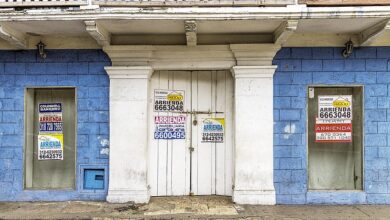Homeowners Insurance for High-Risk Areas in Luxembourg: What You Need to Know

Luxembourg, with its picturesque landscapes and high standard of living, is a desirable place to own a home. However, certain regions within the country face unique risks that can impact homeownership, such as flooding, severe weather events, and even proximity to industrial zones. For homeowners in these high-risk areas, securing adequate insurance is essential to protect their property and belongings. In this guide, we’ll explore everything you need to know about homeowners insurance for high-risk areas in Luxembourg, from understanding the risks to finding tailored coverage solutions.
1. Identifying High-Risk Areas in Luxembourg
While Luxembourg is generally considered a safe and stable country, some regions are more prone to specific hazards than others. Common risks include:
- Flooding : Areas near rivers like the Moselle, Sauer, and Alzette are susceptible to flooding, particularly during heavy rainfall or snowmelt.
- Severe Weather : Storms, hail, and wind damage can occur, especially in open or elevated areas.
- Environmental Hazards : Proximity to industrial sites or agricultural activities may pose risks related to pollution or chemical spills.
- Burglary and Theft : Urban areas, such as Luxembourg City, may experience higher rates of property crime.
Understanding the specific risks associated with your location will help you determine the type of coverage you need.
2. Why Standard Homeowners Insurance May Not Be Enough
Standard homeowners insurance policies in Luxembourg typically cover common perils like fire, theft, and vandalism. However, they often exclude or limit coverage for high-risk events. For example:
- Flood Damage : Most standard policies do not cover flood-related losses. Separate flood insurance is required for properties in flood-prone areas.
- Earthquakes : While rare, seismic activity is not covered under standard policies unless added as an endorsement.
- Environmental Pollution : Damage caused by pollutants or hazardous materials is usually excluded unless specifically addressed in a specialized policy.
If you live in a high-risk area, relying solely on a standard policy could leave you financially vulnerable in the event of a disaster.
3. Types of Additional Coverage for High-Risk Areas
To fully protect your home in a high-risk area, consider adding specialized endorsements or purchasing standalone policies for the following:
a. Flood Insurance
Flood insurance is critical if your property is located in a flood-prone region. Key features:
- Covers structural damage and personal belongings.
- Available through private insurers or international programs like the European Flood Insurance Initiative (EFII).
b. Natural Disaster Insurance
Some insurers offer policies that cover damages caused by storms, hail, or landslides. These are particularly important for homes in rural or elevated areas.
c. Environmental Liability Insurance
This policy protects against damages caused by environmental hazards, such as oil spills, chemical leaks, or contamination. It’s especially relevant for homes near industrial zones.
d. Burglary and Theft Insurance
Enhanced coverage for theft and burglary can provide peace of mind for homeowners in urban areas with higher crime rates.
e. Comprehensive Contents Insurance
For valuable belongings like jewelry, art, or electronics, consider additional contents insurance to ensure full replacement value.
4. Factors That Affect Premiums in High-Risk Areas
Several factors influence how much you’ll pay for homeowners insurance in a high-risk area:
- Location : Homes in floodplains, storm-prone regions, or urban centers typically face higher premiums.
- Construction Materials : Properties built with fire-resistant or reinforced materials may qualify for discounts.
- Security Features : Installing alarms, surveillance cameras, or reinforced doors/windows can reduce costs.
- Claims History : If your neighborhood has a history of frequent claims, insurers may charge more to offset potential losses.
- Deductibles : Opting for a higher deductible lowers your premium but increases out-of-pocket expenses in case of a claim.
5. Tips for Reducing Homeowners Insurance Costs
Living in a high-risk area doesn’t mean you’re stuck with exorbitant premiums. Here are some strategies to save:
- Improve Your Home’s Resilience : Upgrade to storm-resistant windows, metal roofs, or flood barriers to reduce vulnerability.
- Bundle Policies : Combine your homeowners and auto insurance with the same provider for multi-policy discounts.
- Increase Your Deductible : Opting for a higher deductible reduces your premium, though you’ll need to budget for out-of-pocket expenses.
- Shop Around Regularly : Rates vary widely among insurers, so it pays to compare quotes annually.
- Maintain Good Credit : Many insurers use credit scores to determine premiums. Improving your score can lead to savings.
6. State-Specific Programs and Initiatives
While Luxembourg does not have a centralized government-backed insurance program like the U.S. National Flood Insurance Program (NFIP), there are initiatives to assist homeowners in high-risk areas:
- European Solidarity Fund (EUSF) : Provides financial aid to individuals and communities affected by natural disasters.
- Private Insurer Partnerships : Some insurers collaborate with local governments to offer affordable flood or storm coverage in high-risk regions.
Research whether your municipality offers subsidies or incentives for mitigating risks, such as installing sump pumps or reinforcing foundations.
7. Steps to Take Before Buying a Home in a High-Risk Area
If you’re considering purchasing a home in a high-risk zone, take these precautions:
- Assess the Risks : Research the area’s history of natural disasters, crime rates, and environmental hazards.
- Check Insurance Availability : Confirm that affordable coverage is available before committing to a purchase.
- Understand Building Codes : Ensure the home complies with local regulations designed to mitigate risks (e.g., flood-resistant construction).
- Consult Professionals : Work with real estate agents, insurance agents, and inspectors familiar with the area’s challenges.
8. Common Misconceptions About High-Risk Homeowners Insurance
Let’s address a few myths that often confuse homeowners:
Myth #1: My Standard Policy Will Cover All Disasters
As mentioned earlier, standard policies exclude many high-risk perils. Always review exclusions carefully.
Myth #2: I Don’t Need Flood Insurance Unless I Live Near Water
Flooding can occur anywhere, even miles away from rivers or oceans. Heavy rainfall, snowmelt, or sewer backups can cause flooding in unexpected places.
Myth #3: State Programs Are Always Cheaper
While state-backed plans can be helpful, they aren’t always the most affordable option. Compare them with private insurers to find the best deal.



